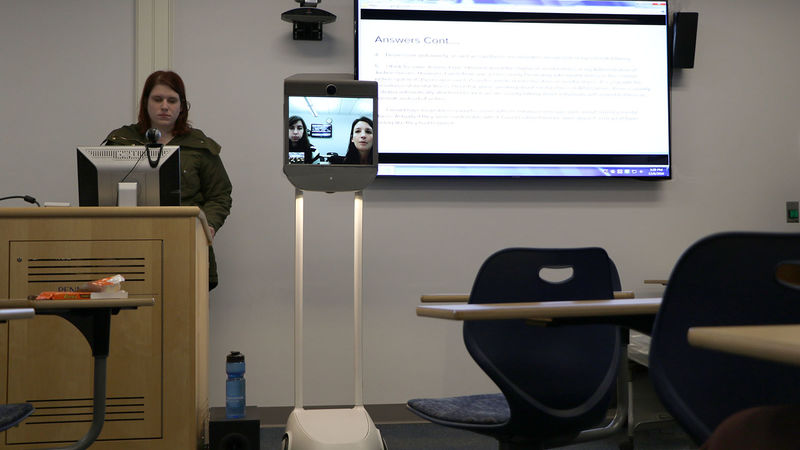Connecting through technology
Classes between the Hazleton and Wilkes-Barre campuses took on a new element at the end of the fall semester thanks to robotic technology. As part of their class work, RHS 401 students used a robot that functioned much like a mobile Skype.


